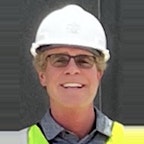30-Hour 2023 NEC PV, Energy Storage, Building and Fire Codes

About this course
It is recommended that students also purchase the book PV and the NEC by Sean White and Bill Brooks. This book has been updated for the 2023 NEC. It can be purchased directly from the publisher or other online book sellers.
It also may be helpful for you to get a copy of the 2023 NEC, which you can access digitally online for free.
Course outline
Welcome • 9 assignments
Orientation Materials
- Navigating Your Course Module: Step-by-Step Guide. (01:05 minutes)
- Intro to Course!! (03:10 minutes)
- NEC Free Access and Paid Access
- Books and resources other than the NEC (Sean's 9 books)
- Set up email notifications and your student profile
- Live Online Proctoring (LOP) for All NABCEP Exams!
- Connect with your instructor Sean on LinkedIn
- Introduce yourself on the discussion board
- Want to help make this class better?
Module 1 • 30 assignments
NEC Overview
- Module 1 Organization
- NEC Introduction and Article 90 Introduction (13:58 minutes) Preview
- Article 100 Definitions Accessible to Fault Current (20:23 minutes)
- Article 100 Definitions Feeder to Module System, AC. (AC Module System) (25:51 minutes)
- Article 100 Definitions Neutral Point to Wireless Power Transfer Equipment (end) (30:41 minutes) Preview
- Article 110 General Requirements for Electrical Installations (31:42 minutes)
- Chapter 2 Wiring and Protection (12:27 minutes)
- Chapter 3 Wiring Methods and Materials (22:59 minutes)
- Chapter 4 Equipment for General Use (07:26 minutes)
- Chapters 5, 6, 7, 8, 9 and Annexes overview (11:08 minutes)
- Upcoming Videos: Exploring Key Topics in Greater Detail
- NEC Article 200 Grounded Conductors (16:18 minutes)
- NEC Articles 210 Branch Circuits, 215 Feeders and 230 Services (17:59 minutes)
- NEC Article 240 Overcurrent Protection Part 1 (24:40 minutes)
- NEC Article 240 Overcurrent Protection Part 2 (17:19 minutes)
- NEC Article 250 Grounding and Bonding Part 1 (26:37 minutes) Preview
- NEC Article 250 Grounding and Bonding Part 2 (20:04 minutes)
- NEC Article 300 General Requirements for Wiring Methods and Materials Part 1 (14:56 minutes)
- NEC Article 300 General Requirements for Wiring Methods and Materials Part 2 (21:26 minutes)
- NEC Article 310 Conductors for General Wiring Part 1 (14:41 minutes)
- NEC Article 310 Conductors for General Wiring Part 2 (18:53 minutes)
- NEC Article 310 Conductors for General Wiring Part 3 (21:14 minutes)
- 320 to 358 Common Wiring Methods like EMT Part 1 (15:18 minutes)
- 320 to 358 Common Wiring Methods like EMT Part 2 (17:27 minutes)
- NEC Chapter 4 Featuring Article 480! Part 1 (15:13 minutes)
- NEC Chapter 4 Featuring Article 480! Part 2 (12:59 minutes)
- NEC Chapter 9 Tables Part 1 (28:19 minutes)
- NEC Chapter 9 Tables Part 2 (19:32 minutes)
- NEC Chapter 9 Tables Part 3 (15:09 minutes)
- Informational Annexes (11:08 minutes)
Module 2 • 14 assignments
NEC Article 690 PV Systems
- Read NEC Article 690 PV Systems
- 2017 vs. 2020 vs. 2023 National Electrical Code (NEC)
- Podcast listening to 2020 NEC Article 690 - Radio 690! (.mp3)
- 690.1 to 690.6 (42:05 minutes)
- 690.7 (38:51 minutes)
- 690.8 (31:39 minutes)
- 690.9 (30:13 minutes)
- 690.11 and 691.10 (06:46 minutes) Preview
- 690.12 (43:28 minutes)
- 690 Part III (24:01 minutes)
- 690 Part IV (32:28 minutes)
- 690 Part V and VI (37:15 minutes)
- 691 (14:45 minutes)
- 690.12(B)(2)(1) Rapid Shutdown UL Listing
Module 3 • 18 assignments
Module 3 Energy Storage Systems (706) and Interconnections (705)
Article 705 Interconnected Power Production Sources is very important for both PV and ESS and is definitely a part of the NABCEP certification exams.
- Article 705 (13:44 minutes)
- 705.11 to 705.13 (21:03 minutes)
- NEC Update for IPCs effective 1/1/23 even for the 2020 NEC.
- 705.12 (38:50 minutes)
- 705.13 EMS (21:31 minutes)
- 705 MID and EMS (07:52 minutes)
- 705 ESS implications and Markets (11:25 minutes)
- Article 625 (33:10 minutes)
- Energy Storage Article Scopes (28:41 minutes)
- 706 Part I (21:39 minutes)
- 706 Part II (26:19 minutes)
- 706 Part III and IV (19:32 minutes)
- 706 Part V and VI (18:29 minutes)
- 2020 National Electrical Code 706 With Bill Brooks Part 1 (20:04 minutes)
- 2020 National Electrical Code 706 With Bill Brooks Part 2 (16:26 minutes)
- Bill Brooks talks Energy Storage Systems Part 1 (22:29 minutes)
- Bill Brooks talks Energy Storage Systems Part 2 (10:56 minutes)
- Bill Brooks talks Storage Batteries Article 480 (03:24 minutes)
Module 4 • 19 assignments
More NEC and some Building Codes
- Answer to Question on Connecting PV System to a Split Bus Panel (05:47 minutes)
- Code-Compliant Conductor Sizing - SolarPro (PDF) (.pdf)
- Code Compliant Conductor Sizing: an updated take on a 2011 SolarPro Article Part 1 (16:41 minutes)
- Code Compliant Conductor Sizing: an updated take on a 2011 SolarPro Article Part 2 (18:55 minutes)
- Building and Fire Codes with Bill Brooks Part 1- NFPA 855 Energy Storage Systems, IRC, IBC, IFC, NFPA 1, ICC (08:41 minutes)
- Building and Fire Codes with Bill Brooks Part 2 Roof Setbacks (30:55 minutes)
- Building and Fire Codes with Bill Brooks Part 3 The ICC i-codes (13:40 minutes)
- PV UL Listing 1703 transitioned to UL 61730 (.pdf)
- UL PV Listing 61730 replacing UL 1703 and UL 3741 listing for Rapid Shutdown (PV Hazard Control Systems) with Bill Brooks PE (12:08 minutes)
- UL 3741 Rapid Shutdown solution where the PV array can stay up to 1000V using SMA inverters with Sollega or Ironridge racks! (16:53 minutes)
- Grounding electrode schemes and transformers with emphasis on utility-scale (double advanced topic). (21:27 minutes)
- PV Batts
- Video 1: Bill Brooks and Sean White-ESS Building and Fire Codes, 2024 IRC and 2023 NFPA 855 (24:43 minutes)
- Video 2: Bill Brooks and Sean White-ESS Building and Fire Codes, 2024 IRC and 2023 NFPA 855 (20:04 minutes)
- Video 3: Bill Brooks and Sean White-2024 IRC and 2023 NFPA 855 (22:21 minutes)
- Video 4: Bill Brooks and Sean White-2024 IRC (33:46 minutes)
- Video 5: Bill Brooks and Sean White-2024 IRC (29:56 minutes)
- Video 1: Bill Brooks and Sean White-2024 International Fire Code (IFC) - Section 1207 Energy Storage Systems (ESS) (15:57 minutes)
- Video 2: Bill Brooks and Sean White-2024 International Fire Code (IFC) - Section 1207 Energy Storage Systems (ESS) (27:40 minutes)
Module 5 • 6 assignments
2023 NEC Code Changes Quiz
- Discussion Board Request from Sean and Notes on Posting Discussion Board Questions
- 2023 NEC Code Changes Quiz
- 2023 NEC Code Changes - 20 Questions With Answers and Detailed Explanations (.pdf)
- Essential Electrical Equations and Conversions (.pdf)
- NABCEP Exam Registration and Testing Overview: Certemy, Meazure Learning, and Scantron
- How to Check your Score in NABCEP Exam (01:00 minutes)
Conclusion • 5 assignments
Feedback and Additional Resources
- Teach yourself to enjoy studying for success!
- 1 Year of Access to Course Materials
- Feedback: 2-minute Exit Survey
- Consider Joining as a HeatSpring Member
- Certificate of Completion: Request a Certificate
Continuing Education Units
Approved NABCEP CEU Hours
| NABCEP Credential | Advanced Hours for Exam | Recertification CEU Hours | NEC | JTA | RE Elective | Building or Fire Code |
|---|---|---|---|---|---|---|
| 30 | 30 | 28 | 30 | 30 | 2 | |
| 0 | 12 | 0 | 0 | 0 | 0 | |
| 30 | 30 | 28 | 30 | 30 | 2 | |
| 30 | 30 | 28 | 20 | 30 | 2 | |
| 30 | 30 | 28 | 30 | 30 | 2 | |
| 15 | 30 | 0 | 20 | 30 | 2 | |
| 28 | 30 | 28 | 20 | 30 | 2 | |
| 0 | 8 | 8 | 0 | 0 | 0 |
Instructors

Sean White
Sean White was the 2014 Interstate Renewable Energy Council Trainer of the Year. He is an IREC Certified Solar PV Master Trainer and has authored several books on solar. He contributed to the development of the NABCEP PV Installation Professional Job Task Analysis and has been a member of the NABCEP PV Installation Professional Technical Committee. Sean is a...

Bill Brooks
Bill Brooks PE, of Brooks Engineering LLC, has over 30 years of experience designing, installing, and evaluating grid-connected PV systems. More than 12,000 installers and inspectors have attended his courses throughout the U.S. and abroad. His field troubleshooting skills have been valuable in determining where problems occur to focus training on those issues of...


